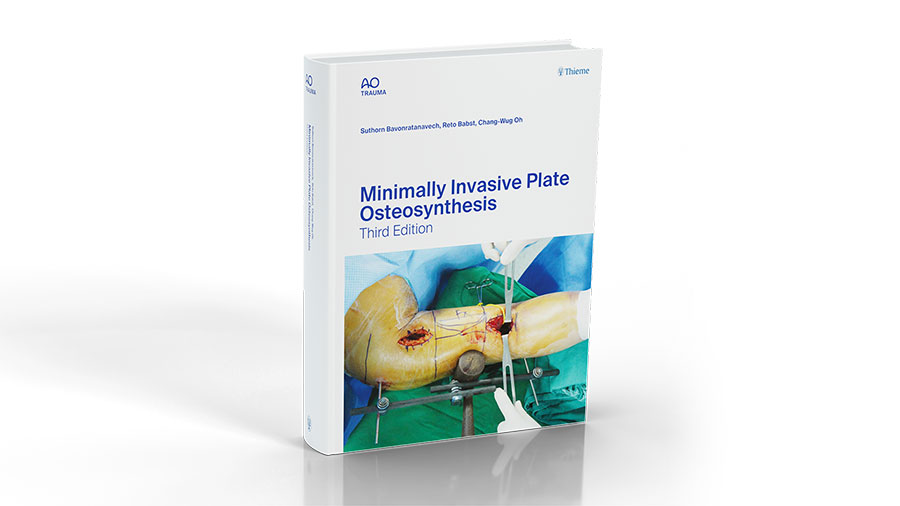AO Trauma publishes expanded edition of 'Minimally Invasive Plate Osteosynthesis'

AO Trauma is proud to release the third edition of Minimally Invasive Plate Osteosynthesis, published together with Thieme. With contributions from 68 expert surgeons from 14 countries, this title consolidates the knowledge and expertise on minimally invasive plate osteosynthesis (MIPO) gained after almost two decades of applying this concept of biological fixation, indirect reduction, and bridge plating. The book is now available for purchase through Thieme's European or United States webshops.
Edited by AO Past President Prof Suthorn Bavonratanavech, MD, Prof Reto Babst, MD, and Prof Chang-Wug Oh, MD, this book is an essential guide for surgeons managing fractures using the MIPO technique. It expands on previous editions, imparting fundamental guidelines and indications for applying minimally invasive procedures (MIP) that boost fracture healing and functional outcomes while minimizing complications.
The evolution of minimally invasive surgical techniques
MIPO is a variety of minimally invasive surgical (MIS) techniques born from the AO's revolutionary argument posed in the late 1950s surgical world for the cautious handling of soft tissue to reduce infection rates. Over the years, the concept of MIS and minimizing trauma related to surgical access has gained widespread international acceptance. Prof Pietro Regazzoni, Dr med, Emeritus Head of Trauma Surgery at University Hospital in Basel, Switzerland, clarifies the connection between MIS and MIPO in the third edition's foreword:
Minimally invasive surgery does not mean to perform conventional operations just with shorter incisions. Adequate skin incisions followed by submuscular plate placement effectively diminish the surgical footprint; consequently, less or minimally invasive. After the introduction of anatomically pre-shaped locking plates, such as the less invasive stabilization system and the locking compression plate, MIPO is increasingly prevalent. The implants can be slid under the muscles, hence improving biology by avoiding further vascular damage of the fracture zone.
Minimally Invasive Plate Osteosynthesis, Third Edition builds upon its preceding editions, the first of which was published in 2006. This initial edition resulted from a group of surgeons from AO East Asia who wanted to explain the concept of MIP and demonstrate its application for trauma surgeons. MIPO was then integrated into the AO's education and curriculum, and the technique has since gained worldwide acceptance. An expanded second edition of Minimally Invasive Plate Osteosynthesis was published in 2012. To date, MIPO is integrated into all AO Trauma curricula, as it is a valuable method in orthopedic trauma surgery, and its success is complemented by an internal fixator, anatomical plates, and numerous new instruments developed by the AO Minimally Invasive Osteosynthesis expert group.
An essential guide for MIPO
While MIPO is one among many approaches a surgeon can select for a case, this book is an essential guide for surgeons who want to be surgically fluent in the method. The book covers the following:
• The general principles in MIPO
• Clinical and radiographic evaluation
• Decision making and options
• Preoperative planning
• Surgical approaches
• Tips and pitfalls to avoid complications
• Postoperative rehabilitation
These subjects are bolstered by the diverse surgeon contributors, more than 50 cases that showcase a comprehensive range of fractures, and close to 500 high-quality illustrations and more than 2,600 images.


